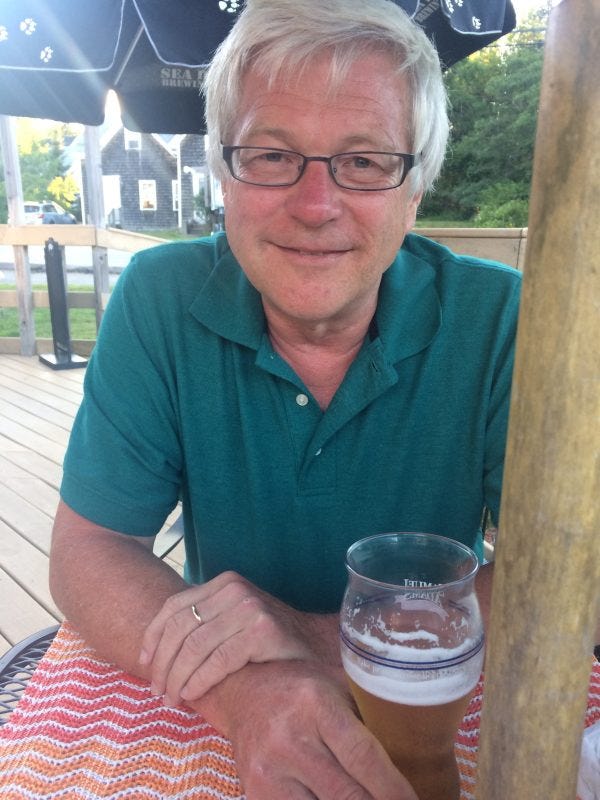Welcome to Mapping the Close Years

Welcome to Mapping the Close Years. First things first, click here to head to the homepage and see what it’s about, or read on to find out more about me and what this newsletter is about. Mostly, it’s about life and travel, the places life takes us to, the experiences we have along the way, and maybe a little dollop of understanding at the end. More than anything, though, this is a project about my native South Carolina lowcountry. After five decades away, I have returned to this special place to explore and compare my notes with my memories. I promise a smidgeon of journalism, too, since I am investigative reporter by trade. My exploration will be personal and yet universal (I hope) so that all can enjoy.
As for me, my writing and essays have appeared in more than two dozen national and regional publications, including The New York Times Sunday Magazine, The New York Times travel section, The Washington Post, Charleston Magazine, The St. Petersburg Times, the Atlanta Journal-Constitution, and many more.
I am the author of Journeys of Lightheartedness; The Clarity of Clay; My Dinners with Dusty; and the forthcoming books Edisto: The True Story of a Sea Island Survival; and How to Write What You Want to Read. Journeys of Lightheartedness is a Kirkus Reviews recommended book (see review below) and also received a five-star Readers’ Review rating from Jack Magnus, who called his reading of the book “a remarkable and illuminating experience.”
In addition, I am the senior investigative reporter for The Lakeland Times in Minocqua, Wisconsin, as well as a contributing partner with the MacIver Institute for Public Policy. I am a five-time first-place winner for investigative journalism by the Wisconsin Newspaper Association (WNA). My writing has appeared in college texts (Social Problems, edited by Stanley Eitzen, Allyn & Bacon, Inc.). I was a contributor to The Reform of State Legislatures (University Press of America), which The Wall Street Journal called “powerful evidence for those who wish to return to the citizen legislatures envisioned by the Founding Fathers.”
Thanks for stopping by, and I hope you settle in for a long visit
The review:
“In these pleasant travel essays ranging from Patmos to Paris, Moore (How the DNR Stole Wisconsin, 2008) looks for the best in his destinations.
“As an investigative reporter, Moore might be accustomed to pinpointing the worst characteristics of people and places. In this volume, however, his emphasis is on a positive attitude. “There is a certain giddiness to be derived in finding the exotic at home, and in uncovering home in the far-flung land,” he says. As proof of the latter: on a trip to Patmos, Greece, Moore unexpectedly ran into his in-laws. Even places that leave a bad first impression can be redeemed. For instance, Moore hated Paris when he first visited with a buddy in his youth, but he realized on a 2004 follow-up trip with his wife that universal French rudeness is an urban myth. The other six essays are U.S.–set, but what they lack in geographical breadth they make up for with topical variety. “New York Stories” uses Kant’s ambivalent adjective, sublime, to encapsulate 12 years of life experiences: attending games at Yankee Stadium, passing a movie set covered in fake snow, and surviving his son’s eventful birth epitomize the beauty, while a tiny apartment, a mugging, and the collapse of his first marriage account for the terror. After all, he says, “the sublime can be accompanied by terror it is so overwhelming.” Despite his wanderlust, Moore has always returned to the South. “Riding the Big Red to South Carolina,” an account of a long bus journey to his hometown, is the collection’s highlight, with excellent reconstructed dialogue and Bill Bryson–esque humor. Frustrated with stereotypes of “charming accents and good-ol’-boy mannerisms,” Moore concentrates on finding the “real” South. Lyrical descriptions of nature and an awareness of the past—prehistory onward—enliven an essay about Charleston and Edisto Island, while a then-and-now portrait of a North Carolina main street illuminates recent history. Moore’s general advice is sound: “If you want to see a place and meet the people, walk it.”
“A solid set of reflections on the places that make a life.”


